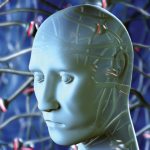“Burnout? In rheumatology fellowship? You’re kidding me, right?” That was the response of one of my very good friends from residency who is now a cardiology fellow, when I told him that I was concerned that one of my co-fellows, at another institution, was on the verge of burning out. Stepping back, I could understand his skepticism. After all, as the now-classic The Rheumatologist article (July 2012) by James O’Dell, MD, says, “rheumatology is the happiest specialty.” Looking back, when both my friend and I were residents, we looked forward to our rheumatology electives because they were more educational and less demanding, leading to the nickname “rheumat-oliday.”
But the more I reflected and the more I researched, the more I recognized that burnout is a danger that all fellows, including those training in rheumatology, are at risk for. Burnout is endemic within our profession, but we scarcely talk about it.
With that in mind, here are six ways to identify and deal with burnout. Know that:
Burnout is a work-related syndrome, not a mental condition: There’s an implicit connotation when talking about burnout that it is somehow linked to depression and anxiety. But even though the outward signs may appear similar, the root cause is completely different. As far as the science of psychiatry can inform us, depression and anxiety are conditions rooted in biochemical imbalances and structural phenomenon in the brain. Burnout, on the other hand, is a work-related syndrome, causing a depressed mood and anxiety, among other symptoms, that resolve when the workplace is removed. Think about burnout as you would work-related asthma or tendinitis due to repetitive mechanical stress. The difference? Burnout involves the mind.
This distinction between burnout and mental illness has incredibly important implications. First, it means that even though counseling and antidepressants may be helpful, they do not get to the root of the problem. Second, we have to remove the stigma behind burnout (along with depression and anxiety). Burnout occurs because of a poor fit between the worker and the workplace, not because there is something inherently weak about the physician.
Burnout is a smoldering fire, not a dramatic explosion: Burnout is an unusual term to describe this phenomenon, because it really depersonalizes physicians as pieces of wood or candles that are ready to be incinerated. But at the same time, it accurately describes that burnout isn’t an event; rather, it’s a slow process that starts almost imperceptibly for both employee and employer alike. We know from studies that burnout starts in medical school, if not earlier, and continues throughout graduate medical education and beyond. With that said, when it is not recognized early enough and is allowed to grow, it can come to a point where it becomes an explosion.
